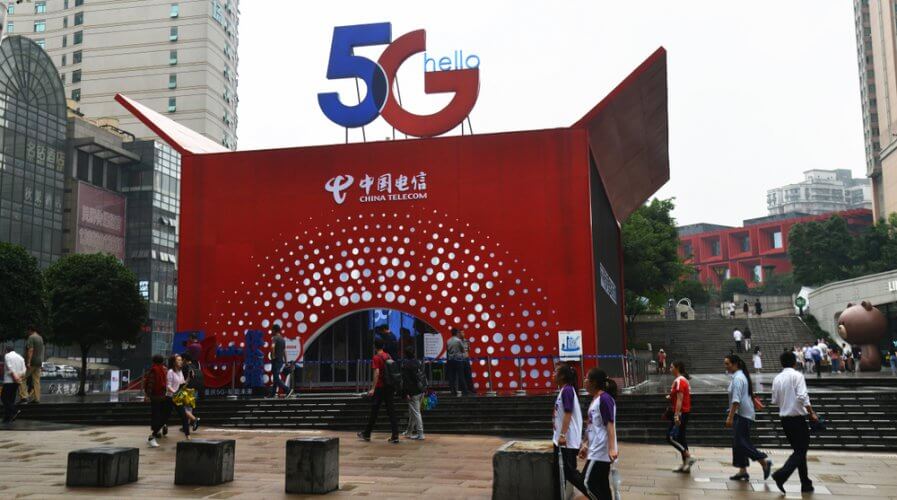
5G is exciting — and it’ll create new challenges and opportunties for businesses. Source: Shutterstock
Businesses need to find new opportunities to thrive on “5G experiences”
VERY FEW people have 5G enabled smartphones today, and when consumer 5G networks roll out next year, not many will have access to the benefits it offers.
However, according to a forecast, over the next five years, between 2019 and 2023, nearly 2 billion 5G-enabled smartphones will be shipped globally — with a significant number of devices going to Greater China, North America, and the Asia Pacific.
Obviously, as 5G devices become more common, high-speed 5G internet is expected to become more affordable and enable a variety of new use cases, especially around entertainment.
To be honest, while affordability will be a factor, customers seem to be willing to pay a premium to jump onto a 5G network when it becomes available.
A recent study evaluated what consumers really wanted from 5G and found that 57 percent of those surveyed are excited about ultrahigh-definition (UHD) video streaming over 5G and 55 percent are enthusiastic about music and concerts that include augmented reality (AR) experiences.
According to the study, today’s consumers are abandoning legacy media for digital, streaming, and mobile. Instead, they’re looking for mobile, nonlinear, and on-demand experiences which will be best enabled by 5G.
In addition to receiving better quality streaming, consumers are also enthusiastic about the immersive content that 5G internet will make possible, creating deeply engaging, multisensory, digital experiences using virtual reality (VR), AR, 360-degree video, 3D techniques, and even hologram videos.
Businesses need to tune-in to win big
Customers want entertainment — that’s what 5G will help reinvent. Be it in autonomous cars, while traveling, or just sitting at home, customers want to see, feel, and experience the world through new lenses and at new speeds.
While that means businesses can pretty much say goodbye to television advertisements, they do have plenty of other opportunities to make an impression on customers, influence them, and sell to them.
Each of the new-age experiences that customers seek will be expensive to build simply because they need more equipment than traditional video and often, will need more “encoding” and support than traditional video feeds.
True, (intelligent) automation can play a part in reducing costs but the solutions themselves might not be cheap to procure in the first place, adding on to the overall costs for producers.
As a result, businesses will have plenty of opportunity to offset those costs without jarring the experience in any way. So, for example, customers looking to experience football and other sports matches in real-time, through 5G enabled virtual reality headsets could see plenty of branding around the field, stadium, and even on the players.
Further, in-video product placements that appear more naturally will help brands looking to partner with content creators without making it apparent that its a sponsored deal.
Among new opportunities, given the fast-paced adoption of 5G-enabled AR and VR devices, brands could create virtual malls, service centers, and other services that not only delight customers and provide them with rich experiences, but also “automate” and “virtualize” much of the interaction with customers, freeing up executives to deal with customers that need more hands-on support.
Tech Wire Asia recently spoke to an agency that helps brands create AR and VR experiences who said that they expect brands to use the technology to gamify the shopping experience as well to better engage with Gen Z and millennial buyers and align with their expectations.
While 5G isn’t here yet, telcos across Asia such as Maxis, Singtel, and China Mobile are working with equipment manufacturers and regulators to roll out services to customers soon.
When the network is available to the public, businesses will need to put their ear to the ground, get a sense of their customer’s needs and get creative to create new opportunities for themselves. Those that are able to do this quickly will naturally gain an edge over the competition.
READ MORE
- Enhancing Business Agility with SASE: Insights for CIOs in APAC
- 3 Steps to Successfully Automate Copilot for Microsoft 365 Implementation
- Trustworthy AI – the Promise of Enterprise-Friendly Generative Machine Learning with Dell and NVIDIA
- Strategies for Democratizing GenAI
- The criticality of endpoint management in cybersecurity and operations


